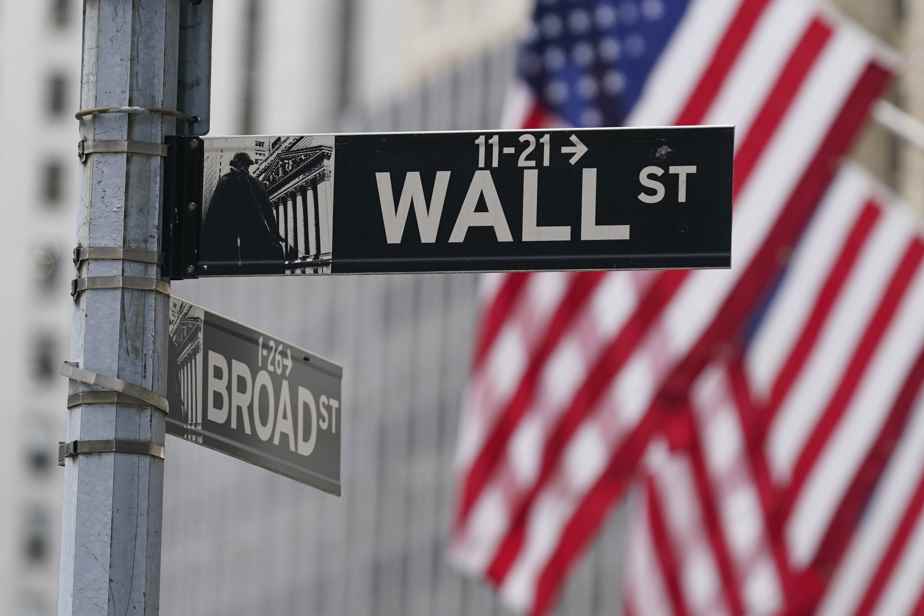(New York) The New York Stock Exchange ended sharply lower on Thursday, spooked by the prospect that the forced march of central banks, led by the Fed, will take the breath away from an economy that is already showing signs of weakness.
Posted at 4:13 p.m.
Updated at 4:51 p.m.
The Dow Jones, which gave up nearly 1,000 points in the session, ended down 2.42%, dipping below 30,000 points for the first time since January 2021, while the NASDAQ index fell 4 .08% and the broader S&P 500 index, 3.25%.
“Wall Street didn’t take long to lose its enthusiasm from yesterday after (the Fed’s announcements), as other major central banks are also becoming more aggressive in their own fights against inflation,” explained , in a note, Edward Moya, of Oanda.
After the Federal Reserve on Wednesday, the Bank of England also raised its key rate on Thursday, but by only 0.25 points, as did the Swiss National Bank, the latter having completely taken investors by surprise.
“When people think about the impact that the simultaneous movement of all the central banks could have” towards a generalized tightening, “they say to themselves: I still have profits to take, let’s go”, and start selling, explained Maris Ogg, portfolio manager for Tower Bridge Advisors.
“With the Fed’s balance sheet reduction (begun in June) and markets expecting another 0.75 percentage point hike at the next Fed meeting,” traders are wondering “if the Fed is not going astray”, and to go too fast and too strong in its monetary tightening, commented Quincy Krosby, of LPL Financial.
The ambient gloom was fueled by a series of poor indicators, first and foremost the index of manufacturing activity in the Philadelphia region, which showed a contraction in June (-3.3 points), while economists were expecting a progress (+4.8 points).
Another cloud darkening the horizon for the US economy is the gradual rise in unemployment, illustrated by higher-than-expected weekly registrations (229,000). For Peter Boockvar, of Bleakley Advisory Group, “the increase in layoffs is watching us, the question being to know what will be the rhythm”.
Last negative signal, the decline in housing starts in the United States, which came out at a level below expectations.
The first signs of a slowdown are starting to appear, “so the question is whether this will affect the pace of inflation”, according to Maris Ogg. “Because the Fed is focused on that” more than on economic growth. “And if not, it looks like they won’t stop (raising rates) despite signs of declining consumer confidence” in the economy.
For Maris Ogg, the ongoing global monetary tightening, as well as the exit from the market of certain investors who want to limit their exposure to risk, threaten market liquidity, which could further increase volatility, or even create more brutal shocks.
Illustration, the yield on 10-year US government bonds oscillated by 0.26 percentage points on Thursday, a very unusual amplitude in a market with usually very measured movements. It stood at 3.23%, against 3.39% the day before.
On the equity side, tech giants led the decline, from Meta (-5.01%) to Apple (-3.97%), via Microsoft (-2.70%) and Alphabet (-3.40%) .
Twitter also ended in the red (-1.66% to 37.36 dollars), still further from the acquisition price proposed by Elon Musk (54.20 dollars), who was vague about his plans for the platform during a meeting with employees on Thursday.
As for Tesla, which the billionaire entrepreneur heads, it was leaked (-8.54% to 639.30 dollars), weighed down by the announcement of price increases for its models, but also by fears that the Twitter file is a distraction.
Among the few to float, mainly so-called defensive stocks, i.e. less sensitive to the economic situation, such as Walmart (+1.04%), Johnson & Johnson (+0.05%) or Procter & Gamble ( +0.61%).
The Revlon cosmetics group was heckled (-13.33% to 1.95 dollars) after the announcement of its bankruptcy filing on Wednesday, which should allow its restructuring. The company has had a hard time with the pandemic, which has led to a slowdown in spending on certain beauty products.
